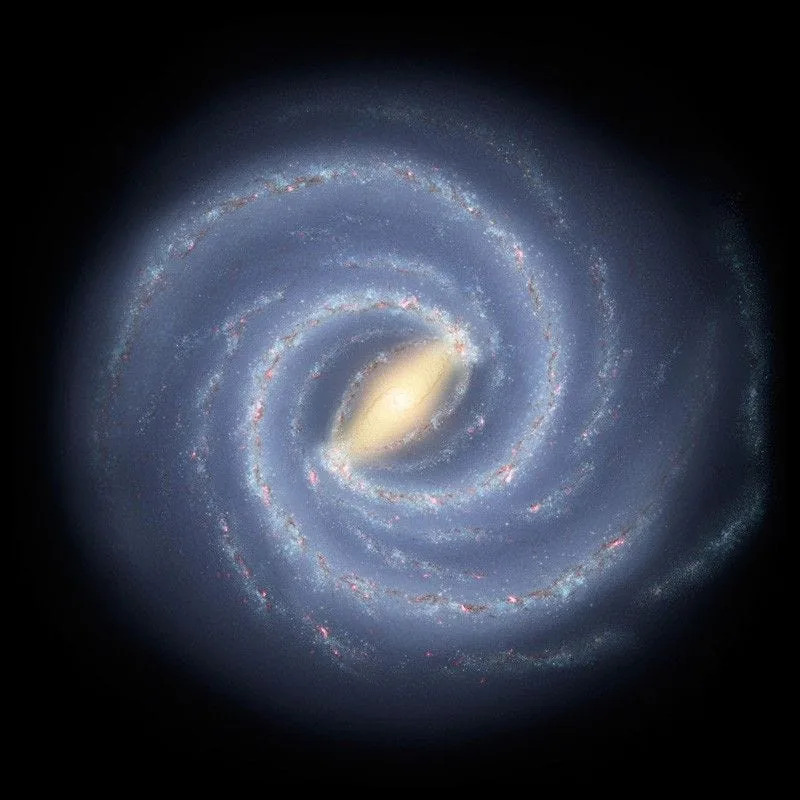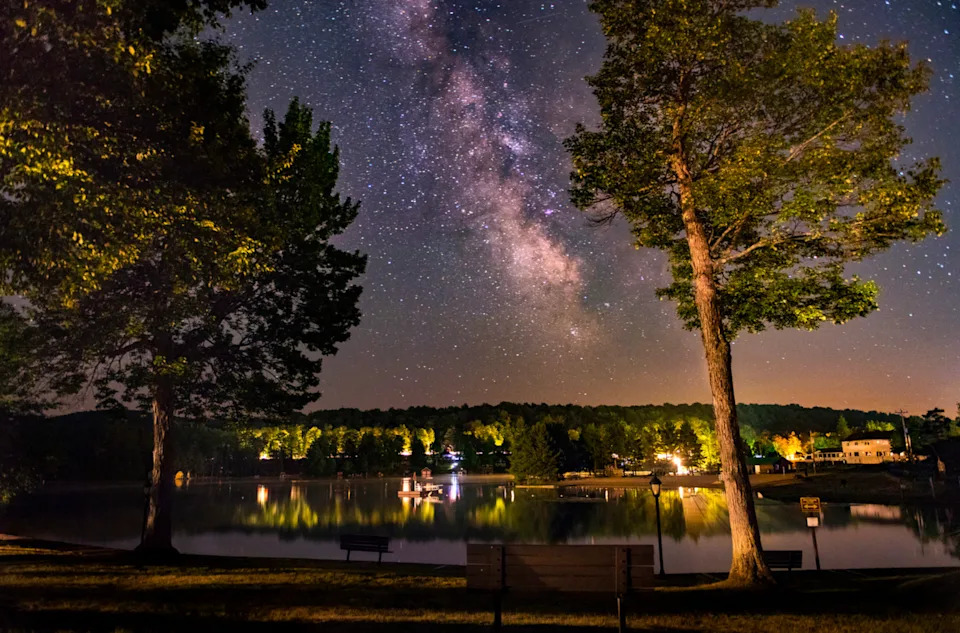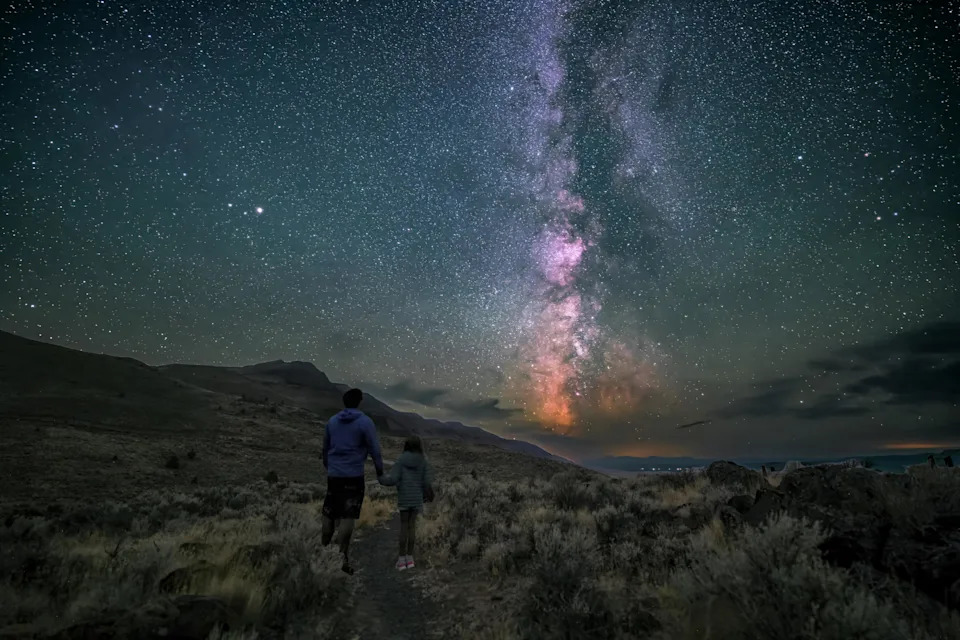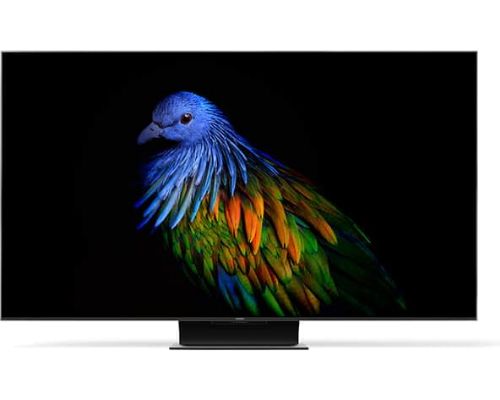Looking for an alternative to fireworks? Stargazers can catch a cosmic light show this Independence Day when the Milky Way appears in the night sky.
The center of our home galaxy, which is composed of billions of stars, is expected to be bright and vibrant throughout the month ahead, including over the Fourth of July weekend.
Astronomers say this is perhaps the best time of year to glimpse the iconic band of hazy light known as the Milky Way as it arcs across the sky.
The best part? You don't need any fancy telescopes or equipment to view it; just your eyes – and maybe a camera, if you're into astral photography.
Here's what to know about our Milky Way, including the best places to seethe stunning natural phenomenon in Oregon.
What is the Milky Way galaxy?
 This illustration shows the Milky Way, our home galaxy.
This illustration shows the Milky Way, our home galaxy.TheMilky Wayis our home galaxy with a disc of stars that spans more than 100,000 light-years. Because it appears as a rotating disc curving out from a dense central region, the Milky Way isknown as a spiral galaxy.
Our planet sits along one of the galaxy’s spiral arms, about halfway from the center, according to NASA.
The Milky Waysits in a cosmic neighborhood called the Local Group that includes more than 50 other galaxies. Those galaxies can be as "small" as a dwarf galaxy with up to only a few billion stars or as large asAndromeda, our nearest large galactic neighbor.
Why is it called the Milky Way?
The Milky Way got its name because from our perspective on Earth, it appears as a faint, milky band of light stretching across the sky.
Is the Milky Way visible from Earth?
 April 4, 2024: Milky Way galaxy spotted above Old Forge Pond, New York.
April 4, 2024: Milky Way galaxy spotted above Old Forge Pond, New York.Though the Milky Way is generally always visible from Earth, certain times of year are better for stargazers to catch a glimpse of the band of billions of stars.
"Milky Way season," when the galaxy's bright center becomes easier to see from Earth, typically runs from February to October, according to the Milky Way photography websiteCapture the Atlas.
But because visibility from Earth depends on the latitude,the further south you go, the longer the Milky Way season will last. For instance, in the Northern Hemisphere, which includes the continental United States,the best time to see the Milky Wayisgenerally from March to September, according to Capture the Atlas.
What you're looking at when the Milky Way is visible is the bright center of our galaxy, "seen edge-on from our position within the galaxy's disk," Preston Dyches, who hosts NASA's "What's Up," a monthly video series that describes what's happening in the night sky,wrote for NASA.
When can you see the Milky Way in July 2025? 'Blue hour' and Summer Triangle explained
The center of the Milky Way, which Dyches refers to as "the core," became visible in June and is expected to shine every night through August as it gets higher in a darker sky.
Typically, the sky is darkest from about midnight to 5 a.m., according to Capture the Atlas. You can check sunrise and sunset times at your location using the website TimeAndDate.
"This doesn’t mean that as soon as the sun goes downyou can see the Milky Way," writes Dan Zafra, co-founder of Capture the Atlas. "Even if it’s in the sky, the Milky Way will be barely visible during blue hour, so you’ll have to wait at least until the end of the astronomical twilight to see all the details of the Milky Way."
Stargazers canobserve the Milky Way galaxy by looking for the Summer Triangle, a shape formed by "threebright stars" that spans across the Milky Way, according to science news website LiveScience.
In the Northern Hemisphere, the Milky Way rises in the southeast, travels across the southern sky and sets in the southwest,according to Weather.com.
Spectators will have the best luck on cloud-free nights and in locations away from city light pollution – including fireworks. DarkSky International maintains a website that lists all designated dark sky communities around the world, including159 locations in the United States.
 A view from the Warner Valley in the newly established Oregon Outback International Dark Sky Sanctuary — the largest such sanctuary in the world.
A view from the Warner Valley in the newly established Oregon Outback International Dark Sky Sanctuary — the largest such sanctuary in the world.Where are the best places in Oregon to see the Milky Way?
Oregon has seven dark sky places that would make ideal spots to scope out the Milky Way, including:
Oregon Outback, eastern Lake County - International Dark Sky Sanctuary
Sisters - International Dark Sky Community
Antelope - International Dark Sky Community
Prineville Reservoir State Park - International Dark Sky Park
Cottonwood Canyon State Park - International Dark Sky Park
Oregon Caves National Monument and Preserve: International Dark Sky Park
Sunriver - International Dark Sky Development of Distinction
Ginnie Sandoval is the Oregon Connect reporter for the Statesman Journal. Sandoval can be reached [email protected] on X at @GinnieSandoval.
Eric Lagatta is the Space Connect reporter for the USA TODAY Network. Reach him at [email protected].
This article originally appeared on USA TODAY: How to see Milky Way in Oregon over Fourth of July weekend













